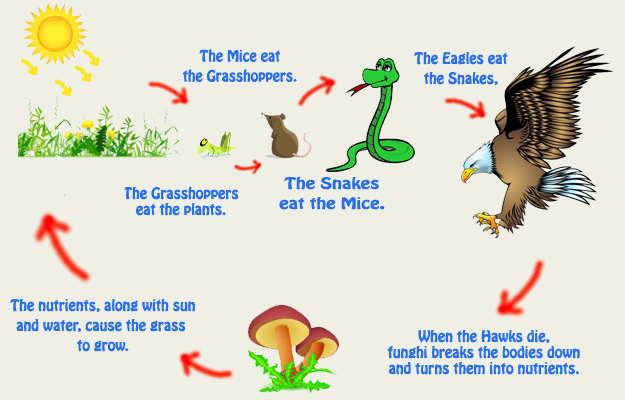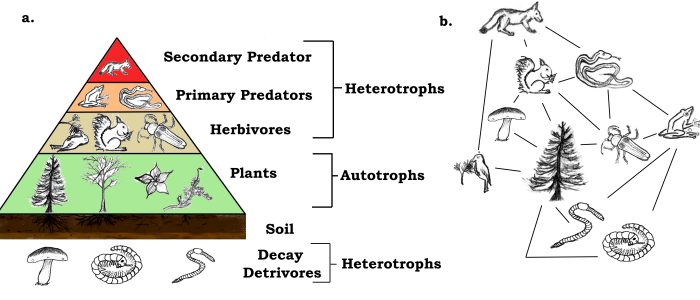Biology: Learning about “the connectedness of life”
Biology can be fun, besides being informative. Learners decipher the cryptic life of microbes, discover why leaves are green, fathom the reasons behind the extinction of dinosaurs and understand how one’s own body works. Biology is really a bouquet of different topics bound together by the “thread of life” and, for the student, “Mother Nature” is the best textbook. Hence teaching and learning must extend beyond the four walls of the classroom, integrating tools and knowledge from the natural, environmental and social sciences.
Unfortunately, the existing high school curriculum often fails to convey the essence of Biology, which has to do with both “interconnectedness” and “interdependence”; students depend on rote learning, and are unable to make connections with real-life situations.

Food Chain
The CLIx Biology module under development focuses on the relationship between living organisms and the abiotic or non-living elements of their ecosystem, so as to bring alive various dimensions of the science of life for high school students. The current module has both classroom and field components, and combines the classic methodologies of science learning – observation and experimentation – with modern tools of information technology.
Students will explore various elements of an ecosystem present in their surroundings – such as a pond or a tank – and conduct experiments (with a replica constructed from local materials) to understand the dynamic relationships between the ecosystem components. Games and simulations will help them to connect this knowledge with other aspects of science and society in general, and biology in particular, and to develop a holistic style of thinking.
Module trials are planned to be held in selected schools after August 2016.





Comments are closed.